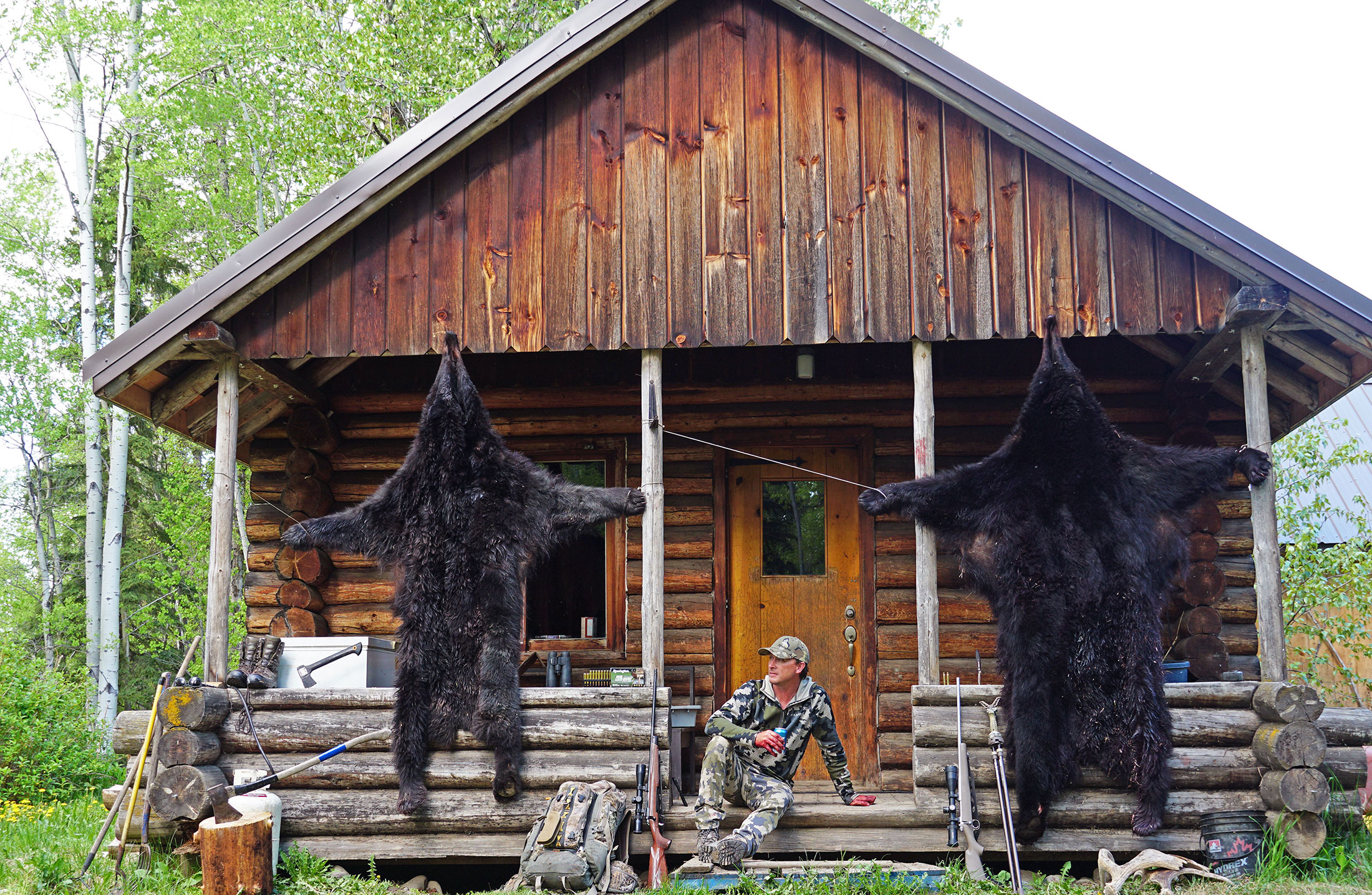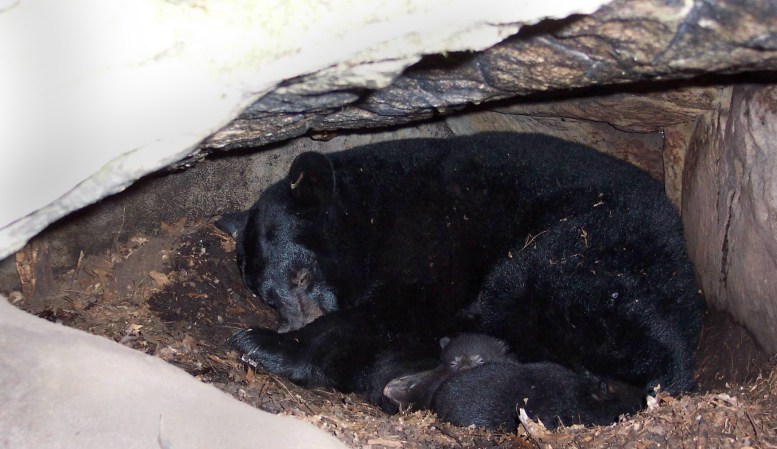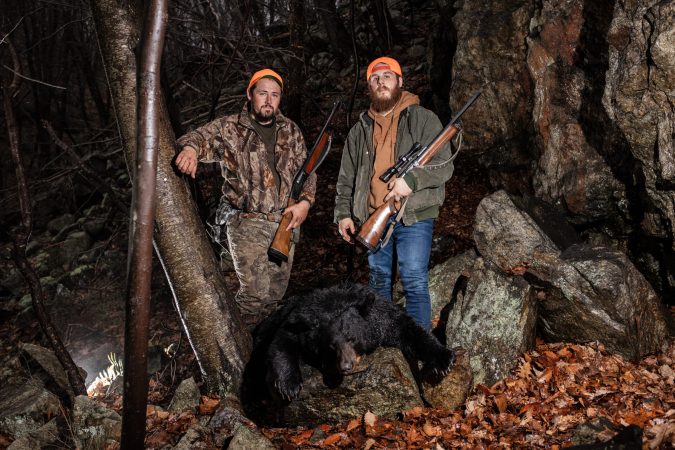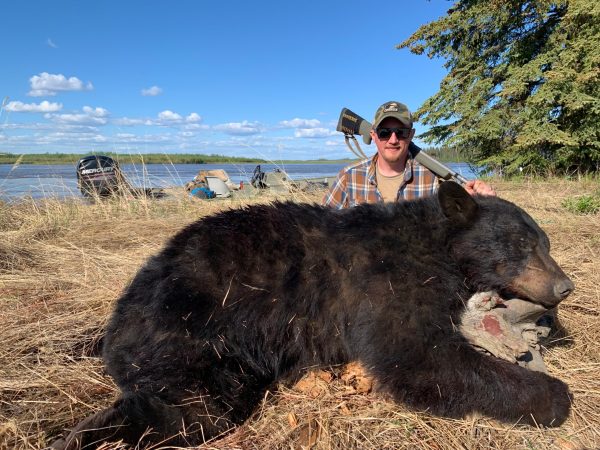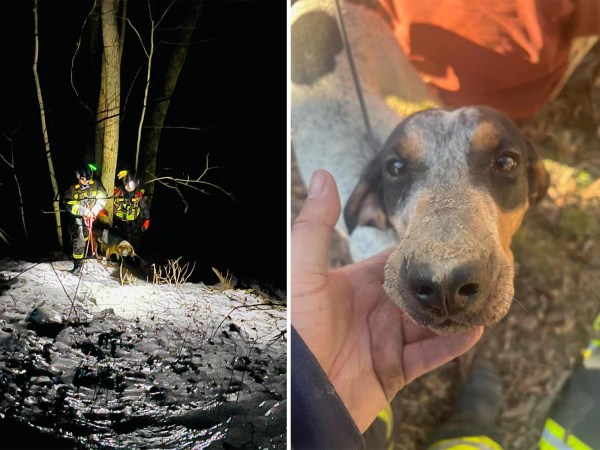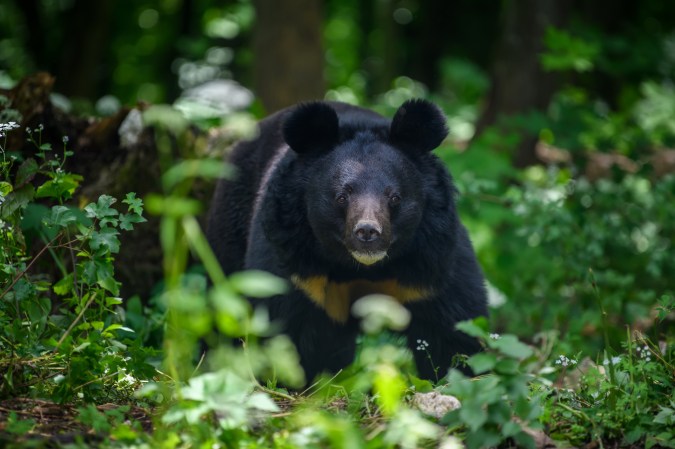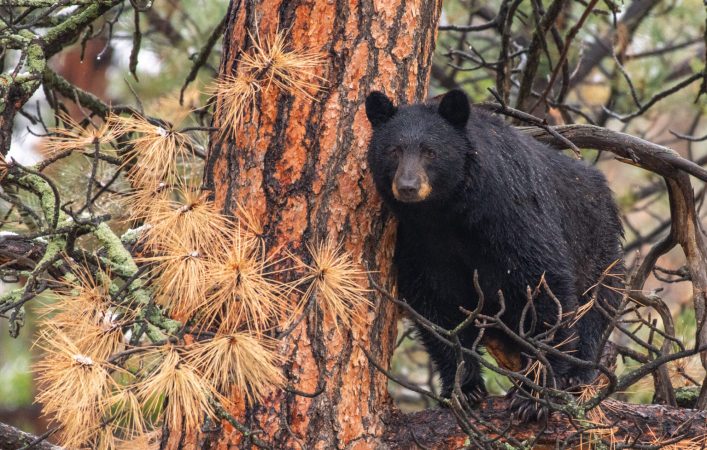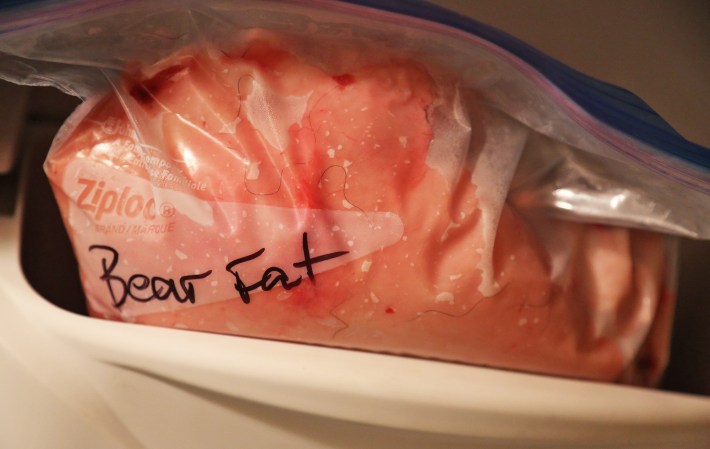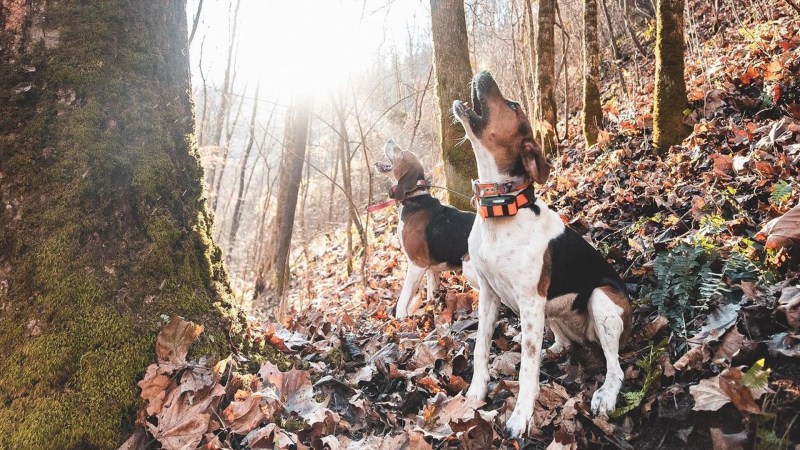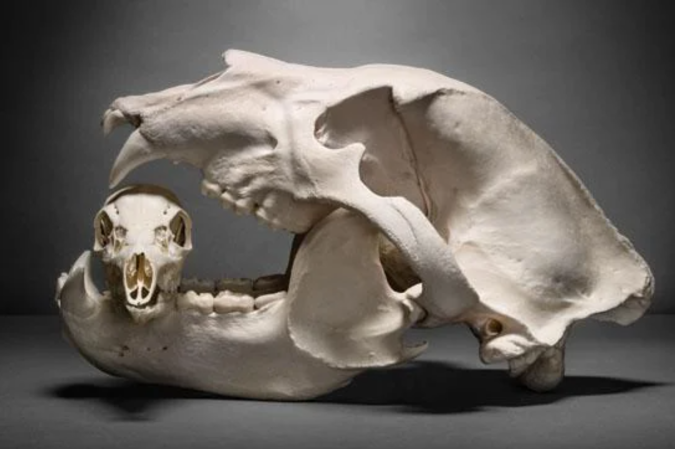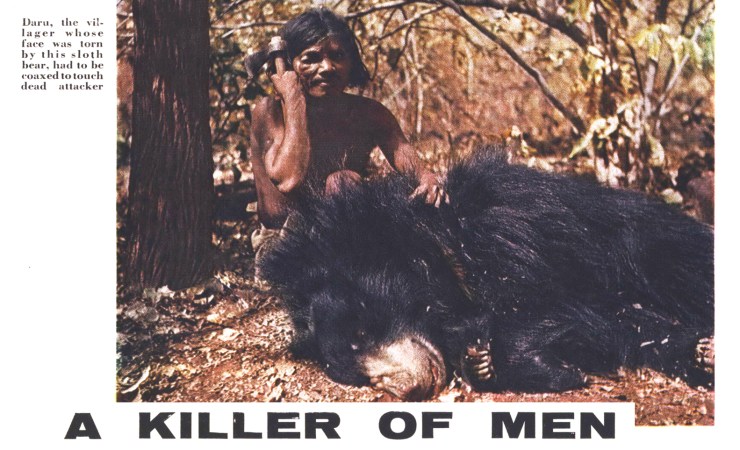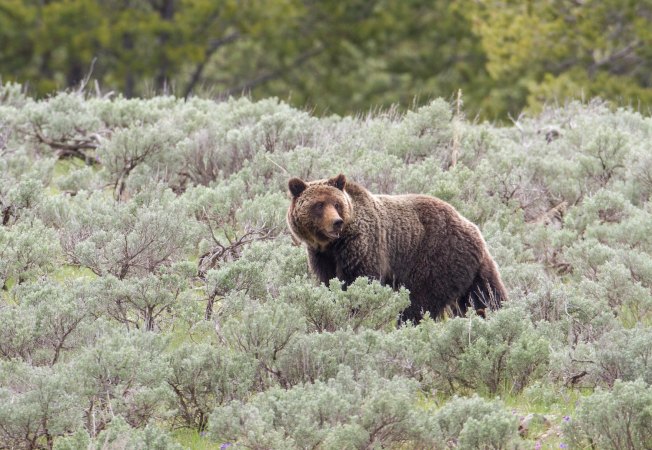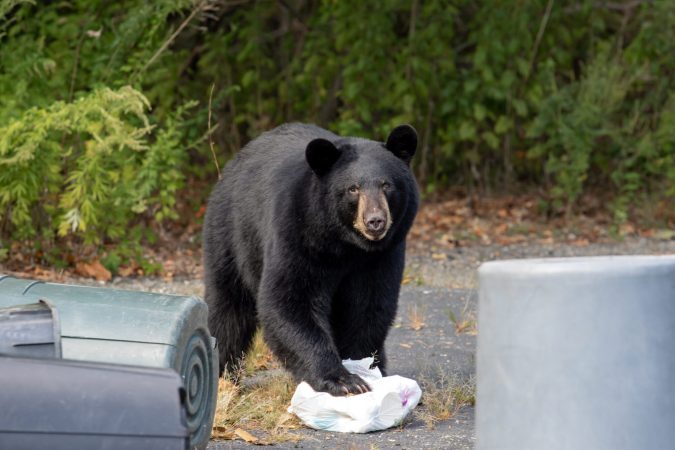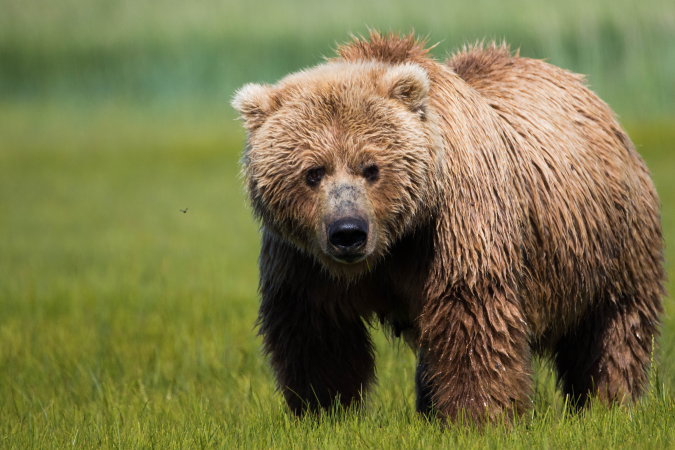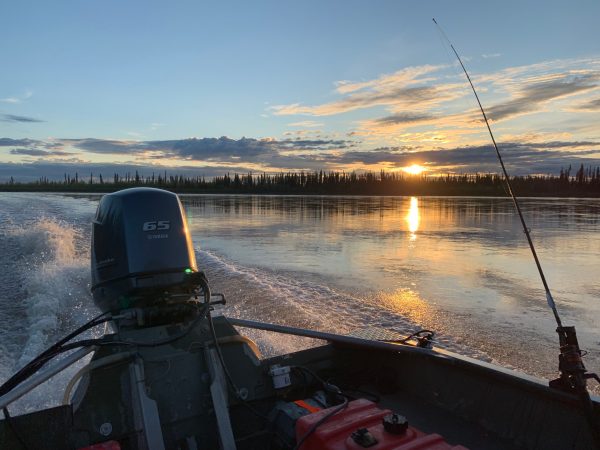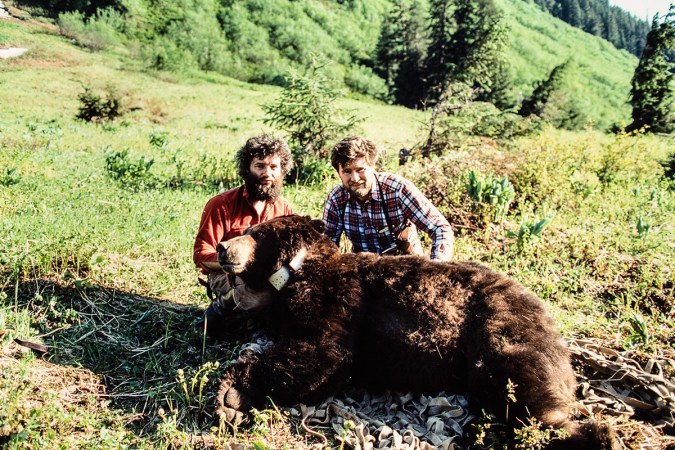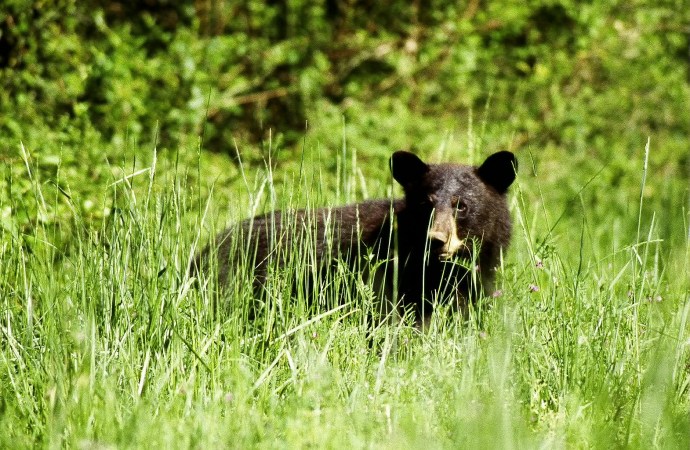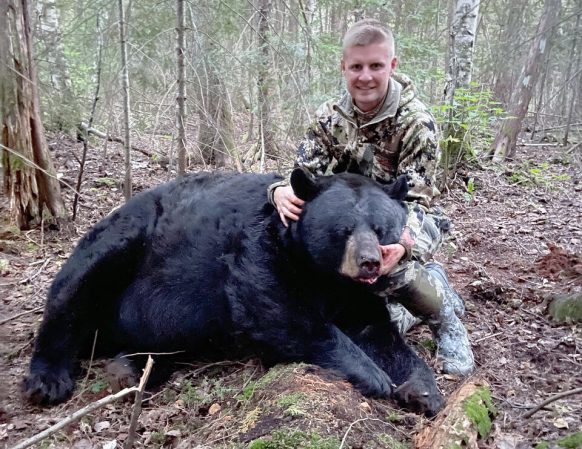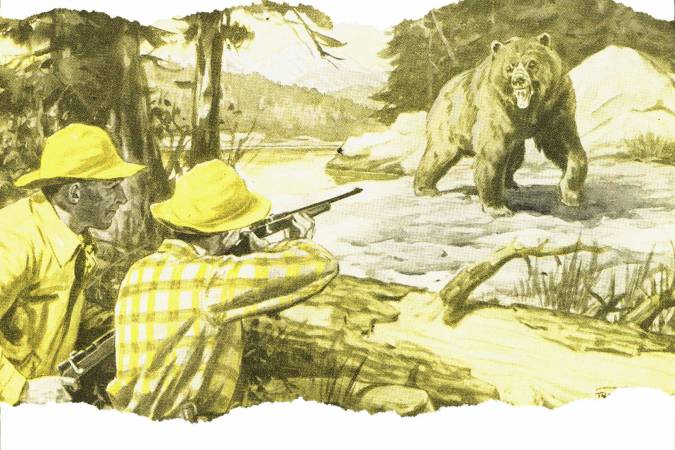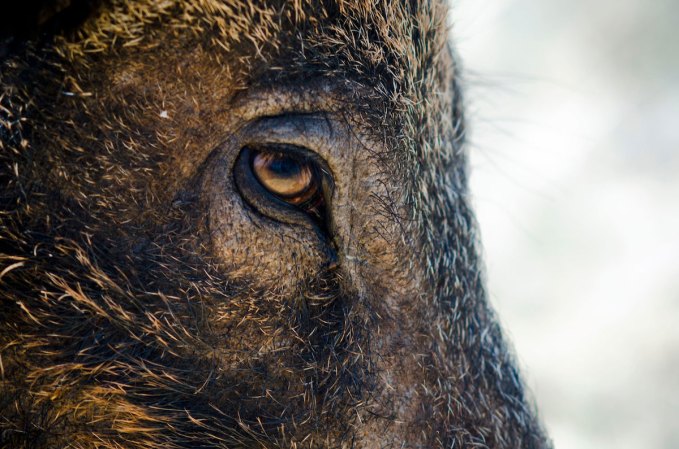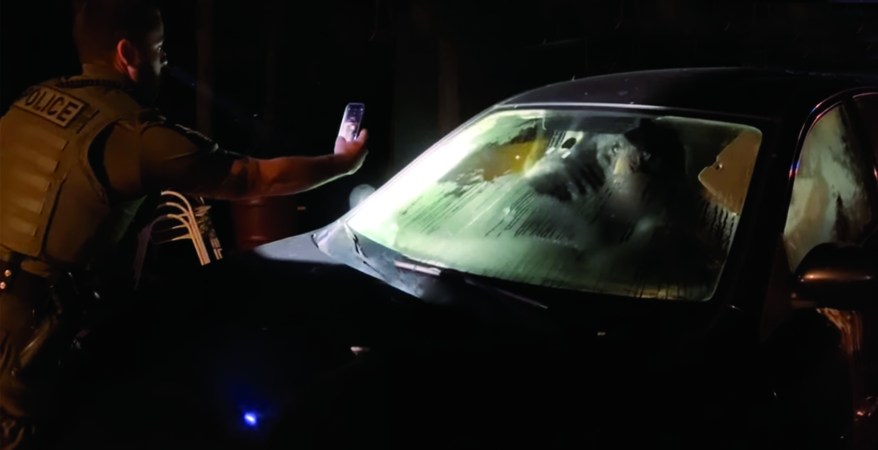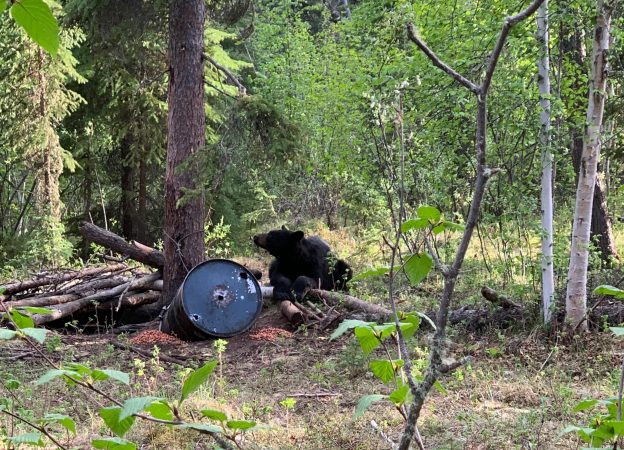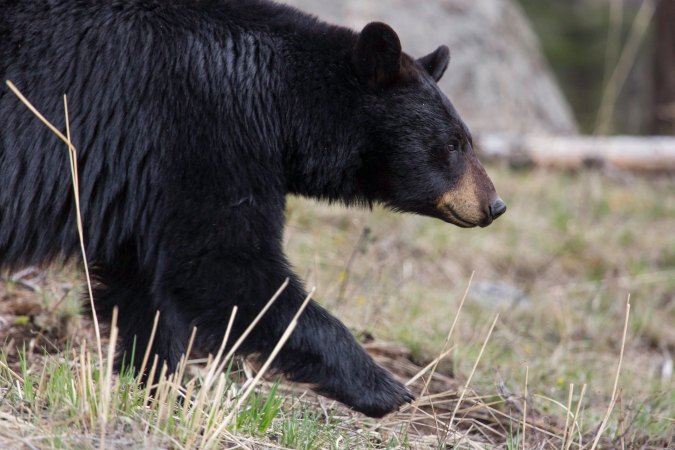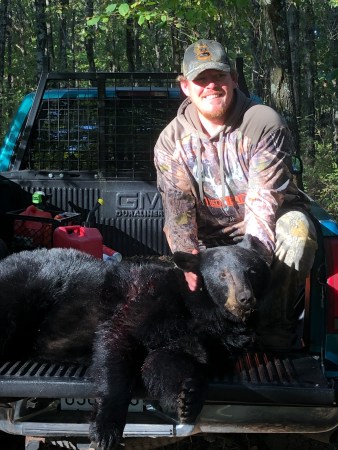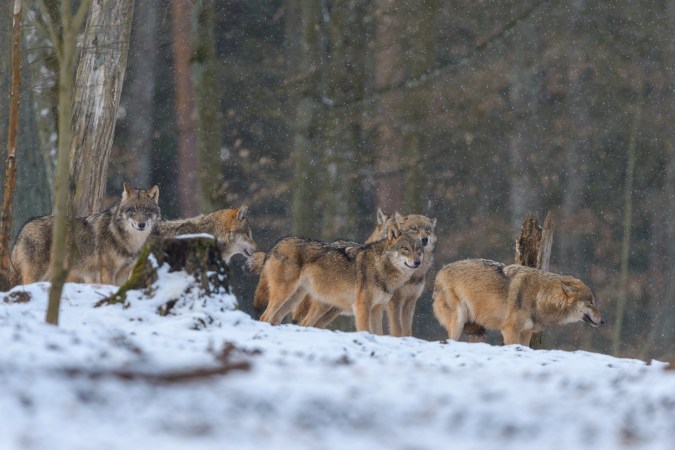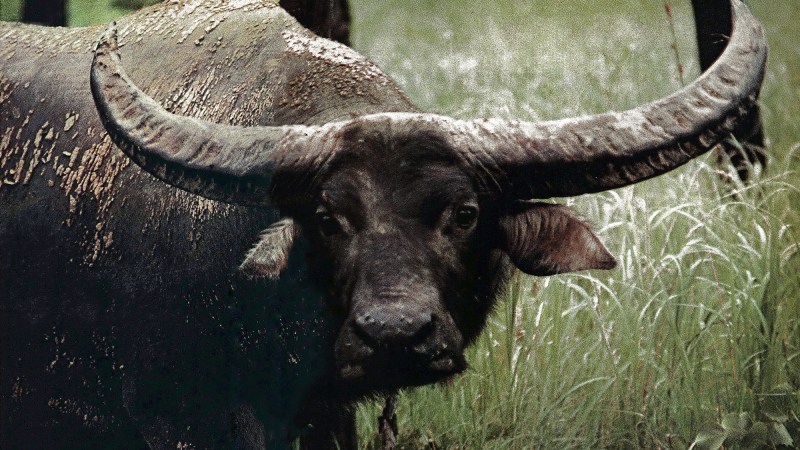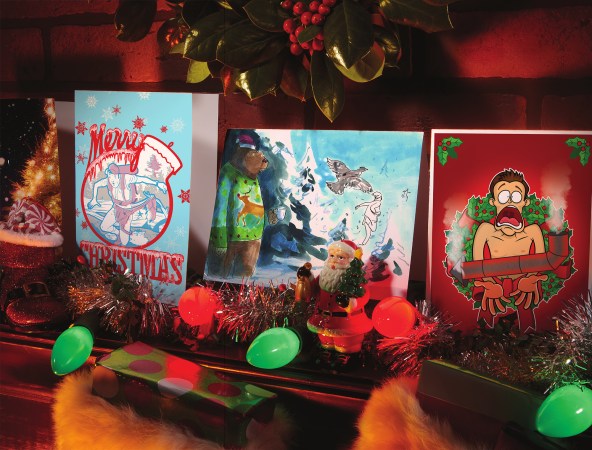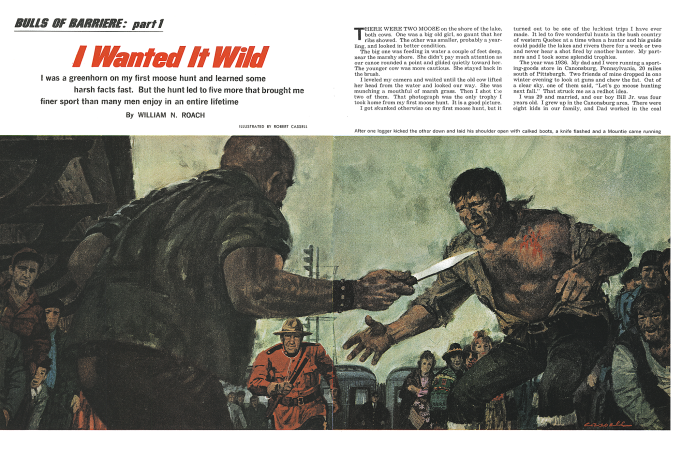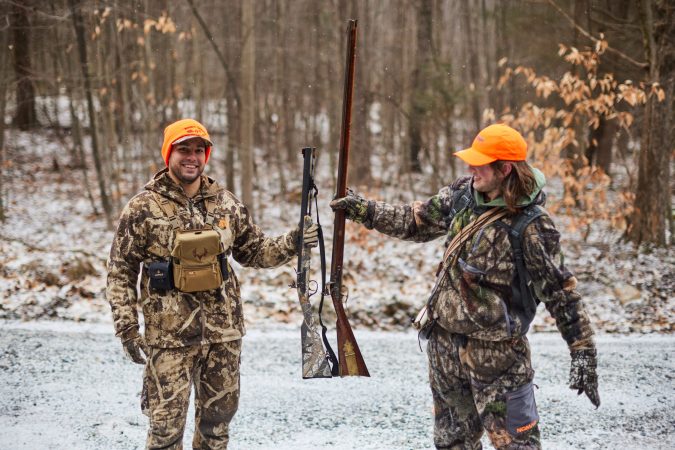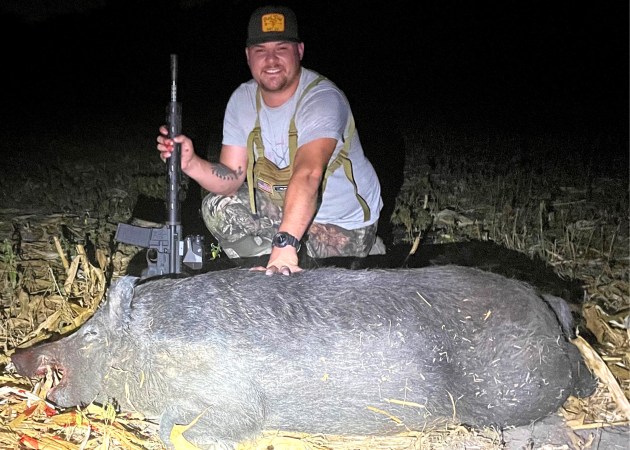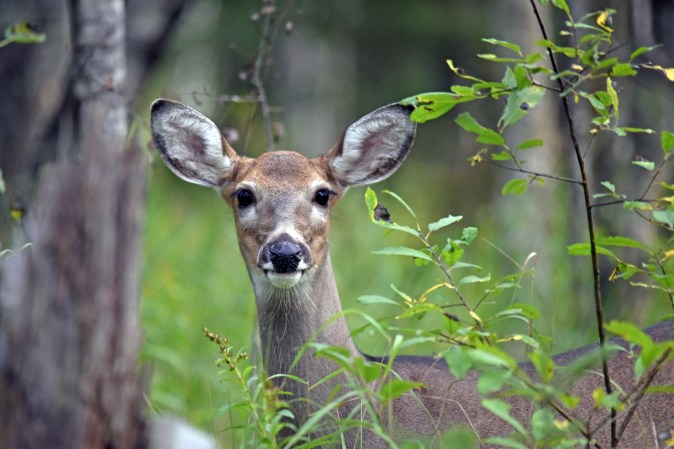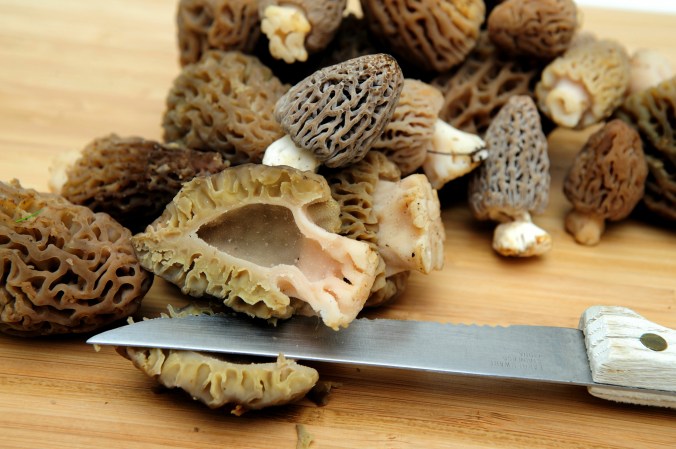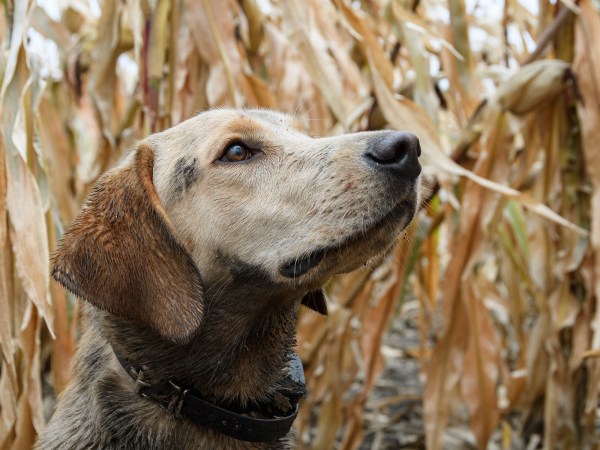One of the most intriguing things about the black bear as a game animal is that there are so many different ways to hunt them. You can wait for them over bait, chase them behind hounds, or stalk them in high-mountain meadows. I’ve been lucky to have done all three, and each method has its own niceties—dogs were the most thrilling, stalking was the most challenging, and waiting for bears from a treestand was the most familiar to a deer hunter like me.
However, if you want to see a lot of bears, perhaps the best method is driving old logging roads in early summer, when sows are out feeding on new growth and rutting boars are never far behind. This is how I hunted black bears last June in central British Columbia with Alpha Dog Outfitters on an invite from Remington Ammunition.
On most hunts, I try to get as far away from the truck as possible. I’d rather hike the hills listening for bugling elk, breathing in fresh mountain air, than ride bumpy backroads listening to a bad country music station with my hunting partners’ farts wafting through the truck. But on this hunt, it was clear that our guide Jeremy Bettcher’s 4×4 Ram would be far more effective than a pair of hiking boots. By the end of the first day, our two groups of hunters in two roving pickups had spotted more than 50 black bears and one sow grizzly, to top it off. By getting to see that many bears, we’d be able to hold for the biggest, most mature boars.
Welcome to Black Bear Country
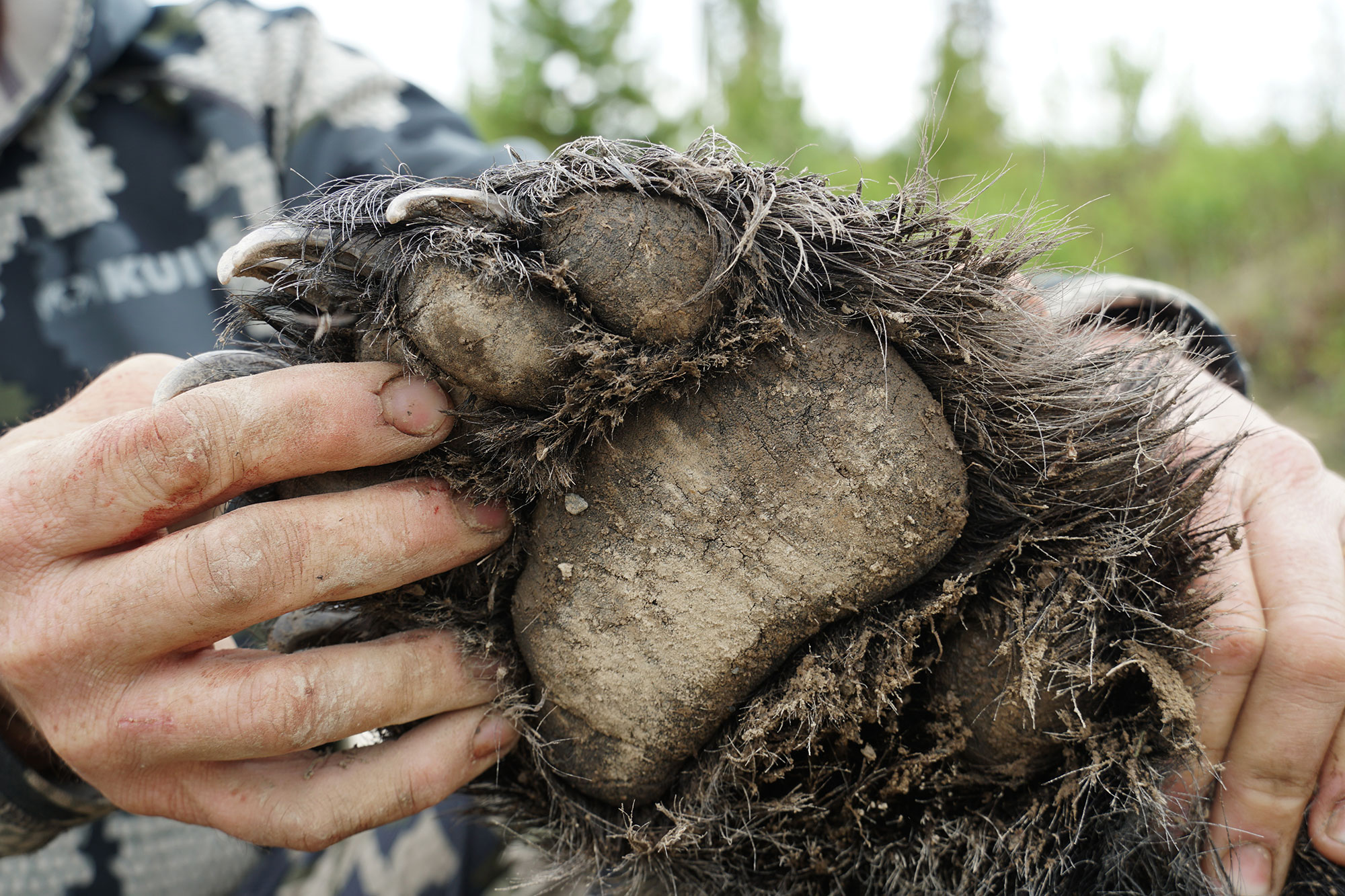
Black bears are thriving across North America. As populations increase in the Northeast, bear encounters create all kinds of headlines. Last winter, New Jersey had its first bear hunt since 2020. Missouri hosted its first modern bear hunt in 2021. With all the media coverage, which can sometimes make it seem as if America’s suburbs are being overrun by bears, it’s easy to forget that the heart of black bear country is far to the northwest. British Columbia has an estimated 160,000 black bears (more than a quarter of Canada’s black bear population). The entire Lower 48 has a rough estimate of 400,000 black bears in total.
This hearty population of B.C. bears is supported by the province’s deep forests and active logging industry. The area we were hunting, south of Prince George, was thick coniferous forest cut by glacial lakes and rivers and plenty of logging activity. In fact, Bettcher’s full time gig was working in the bush as a buncher (meaning he runs the heavy equipment that grabs loose logs, cuts them, and stacks them in bunches).
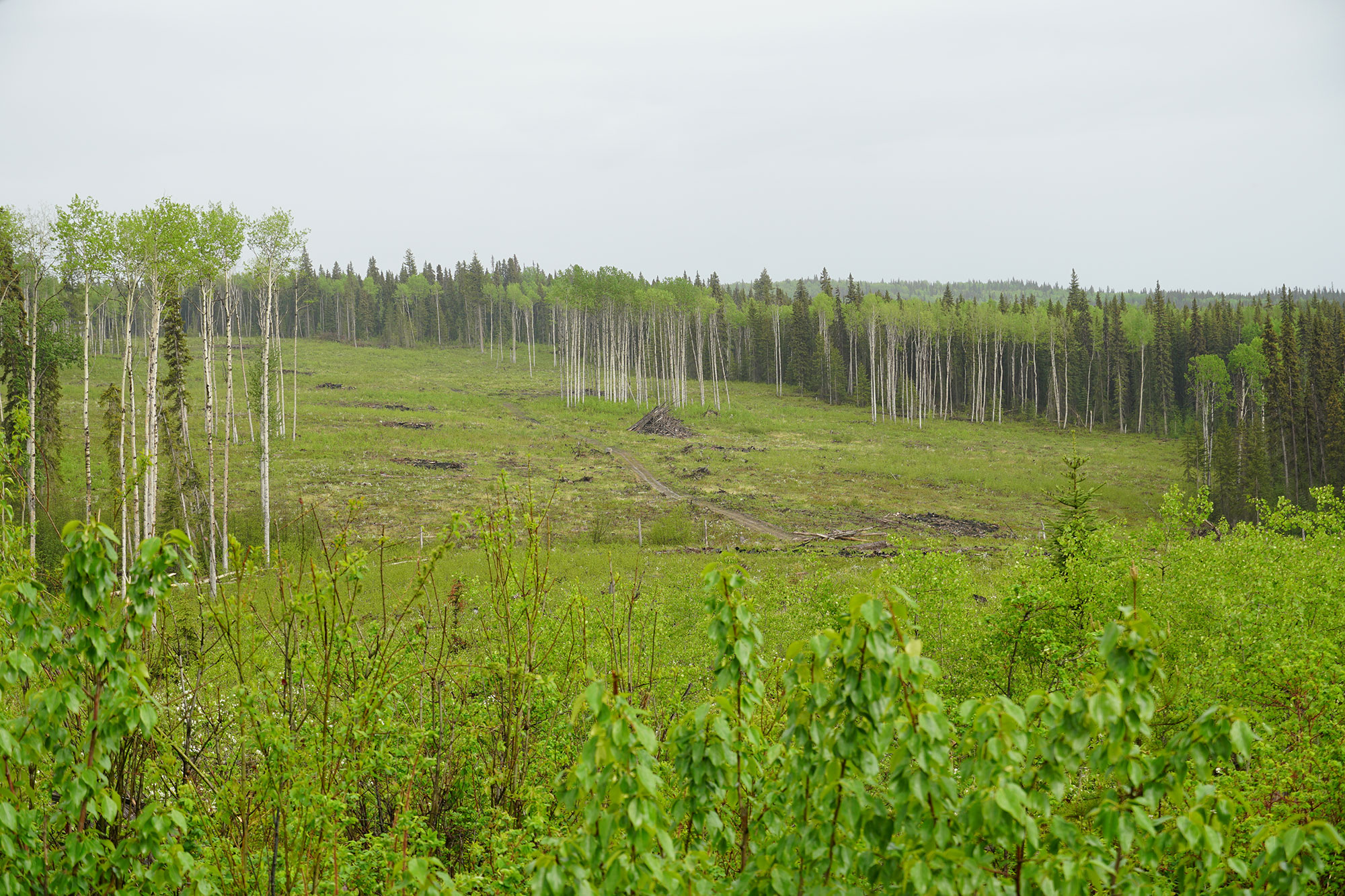
Not long after an area is logged, new growth sprouts up which bears devour in late spring and early summer. This happens along countless miles of logging road ditches which turn yellow with dandelions by June. Sows and their cubs come to the logging roads to feast on dandelions. Boars use the roads to travel long distances and find sows in heat.
Once we left town, almost all the ground was public, or “Crown Land” as they say in Canada.
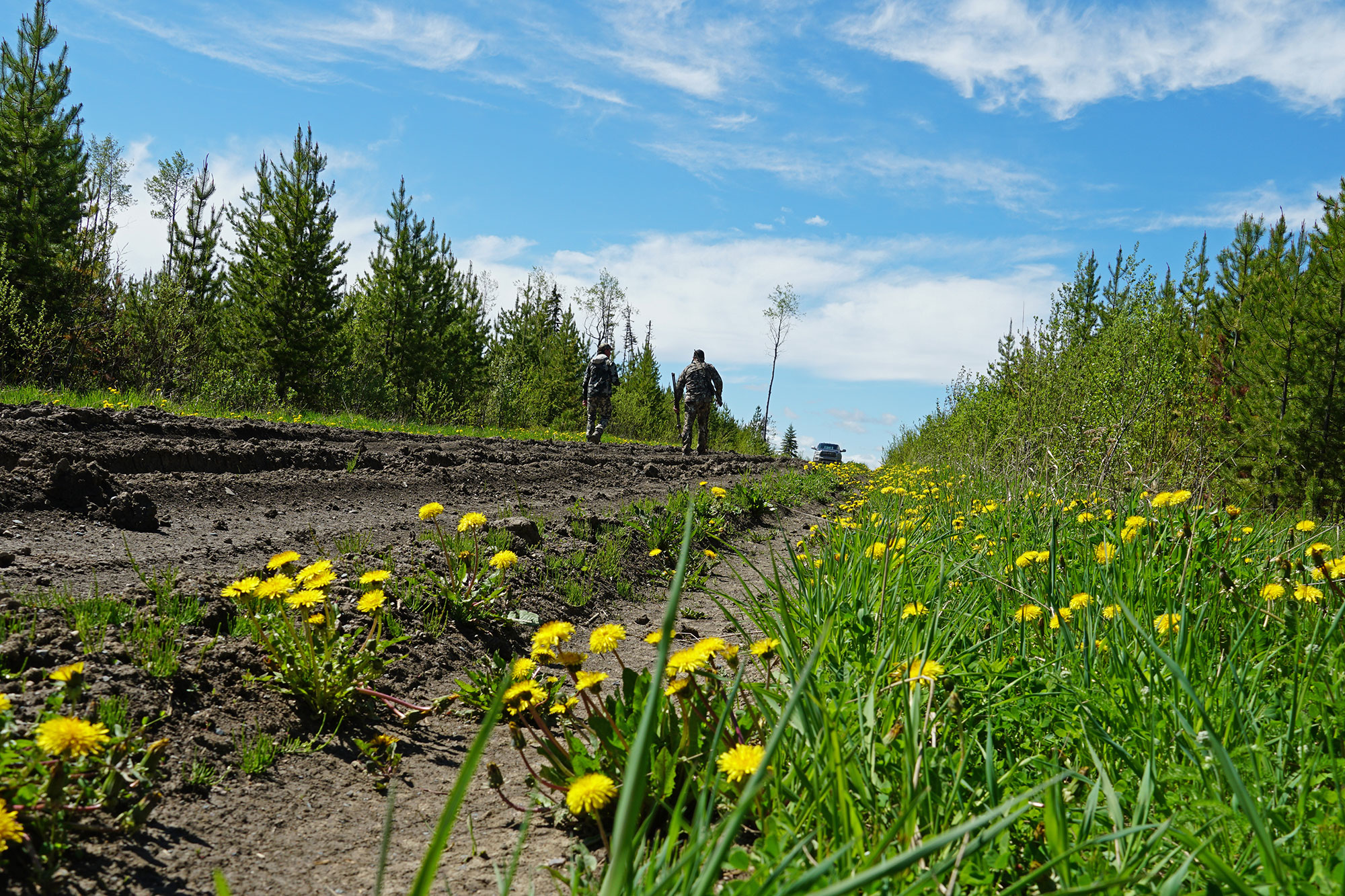
It’s probably important to note that the description of “road” is generous. Most of these logging roads were more like abandoned two-track trails. We saw few other trucks during our patrols, as most locals prefer to do their driving for moose in the fall, not bears in the summer.
Riding for Black Bears
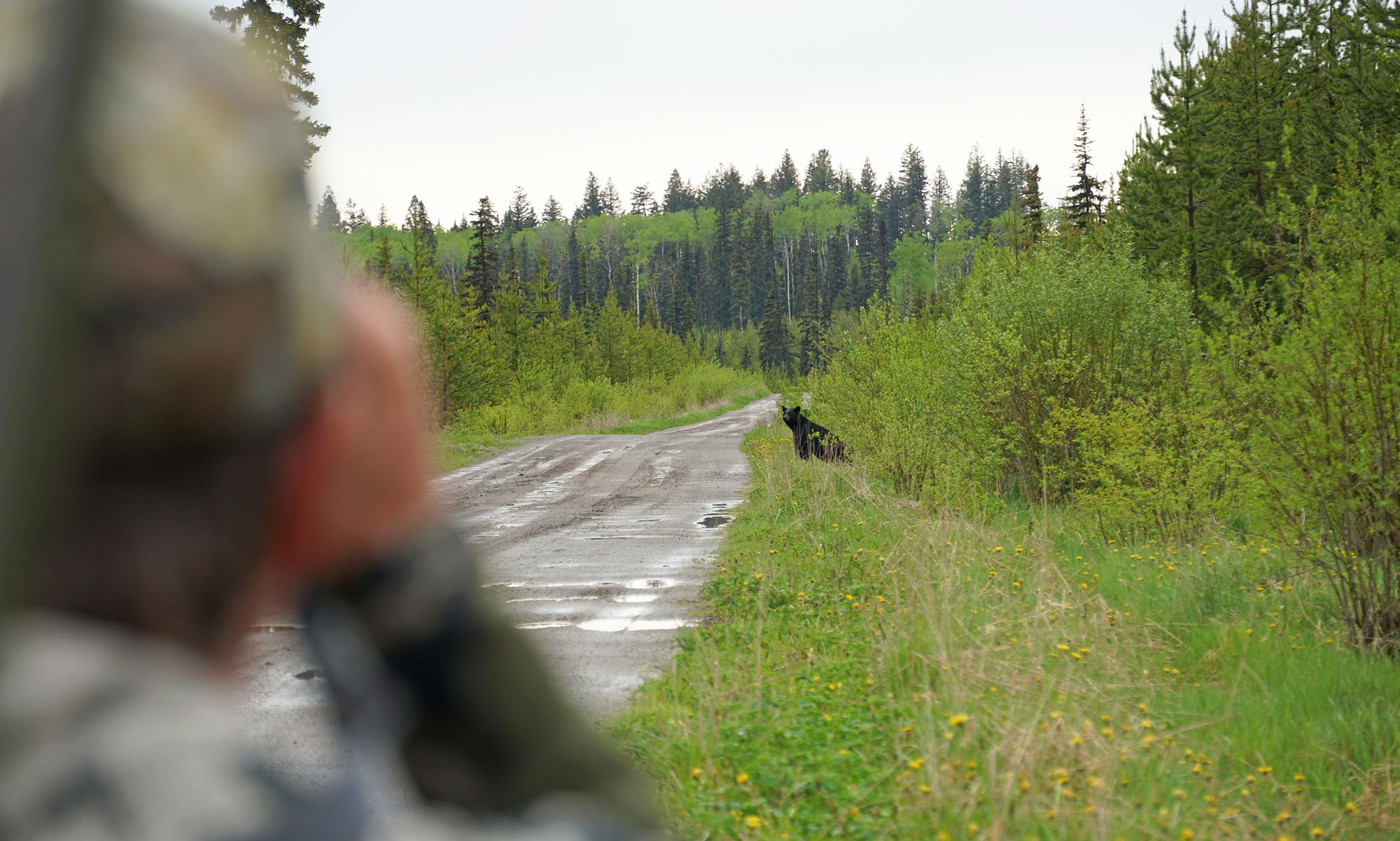
The goal of our hunting strategy was to spot a mature male bear from the truck, at a distance of about 200 yards. He’d either be far down the road ahead of us, or in an open logging cut. We’d sneakily get out of the truck, stalk along the ditch to get a close shot, and kill him right there on the road.
The tactic works because this area has such an incredible bear density and because bears—at least in this country—are not all that concerned about trucks or humans until they get close. The key was spotting the bears before spooking them with the truck. If a bear stepped even five yards off the road, it disappeared into impenetrable forest. He might decide to come back out to the road after 15 minutes, or an hour, or never.
To hunt this way effectively, you need to know when to drive slowly and look carefully in productive areas, and when to speed through unlikely spots. As Bettcher would slow down and speed up, I began to recognize fruitful ground vs. no man’s land. Long straightaways with wide roadsides covered in heavy dandelion growth made for ideal hunting ground. Winding roads with minimal forage meant putting the pedal down.
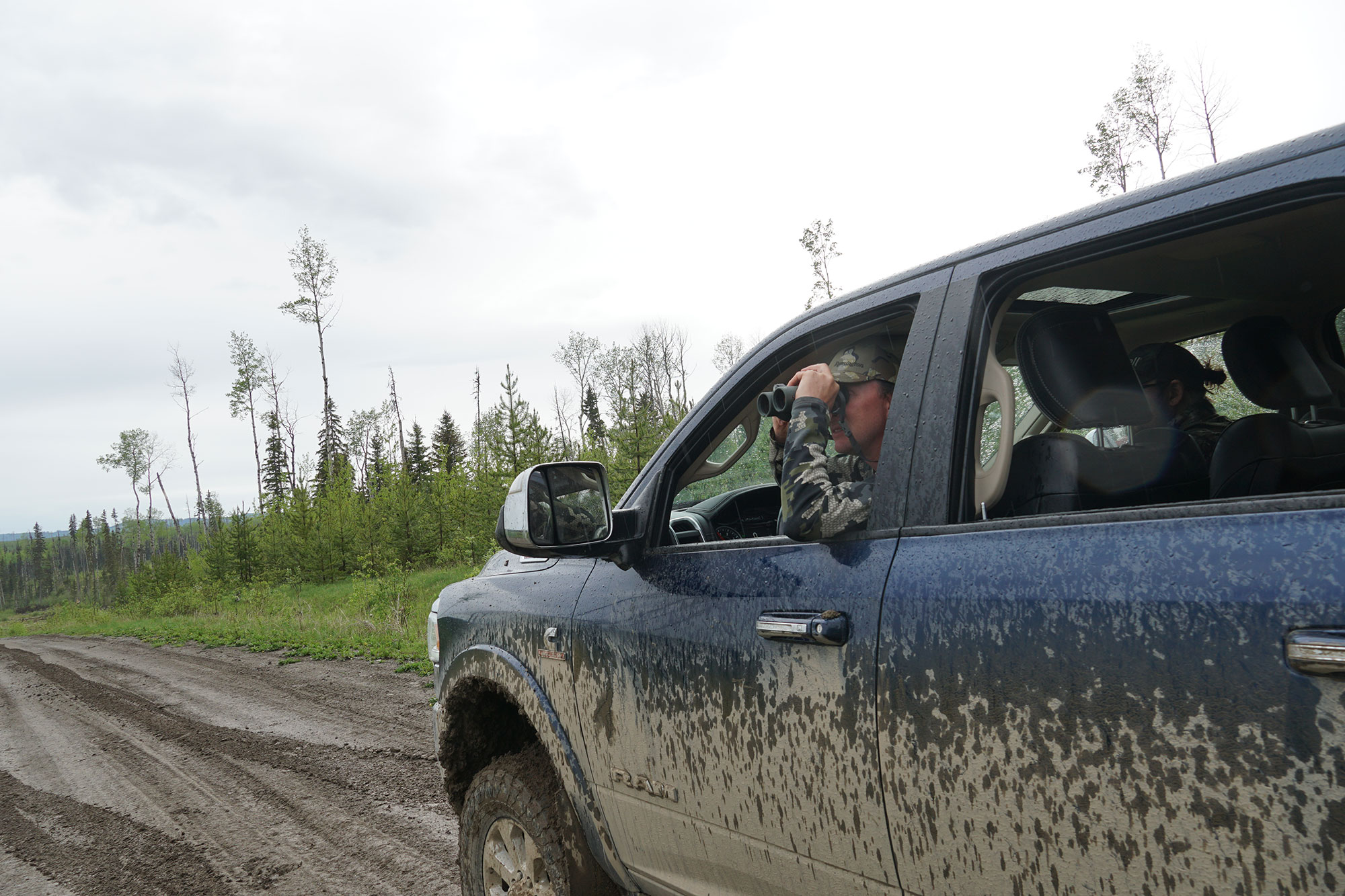
My hunting partner, Matt Rice from Bushnell, graciously let me claim the first shot, so I rode shotgun to start. My job was to be ready to jump out of the truck at any moment, moving quietly and efficiently. No searching around for ammo, no slamming truck doors. My loaded magazine stayed in my pocket (along with an extra shell), my unloaded rifle sat next to my leg, along with my shooting sticks, and my binocular rode around my neck. Shots would likely be from the standing or kneeling position and inside 200 yards—more likely inside 100 yards.
We saw our first few bears not more than an hour into our drive. A few looked like good-sized boars and we left the truck to stalk closer before deciding to pass. We’d creep single file along the ditch, sticking close to the timber. We’d move when the boar put his head down to feed or looked away. When he looked in our direction, we froze. We made several “practice” stalks, which were thrilling in their own right. Creeping along the woodline reminded me of belly crawling toward a big flock of geese, as a kid, just to see how close I could get before they finally got nervous enough to fly off. The critter is half-aware of your presence the whole time, and could decide to flee at any moment.
Field-judging bears is a real skill, but we would take an unscientific approach. We’d keep driving and looking until we found a boar that was an unmistakable giant, one that got everyone in the truck to reflexively whisper “holy…”
“We’ll know him when we see him,” Bettcher said.
Record Book Bears
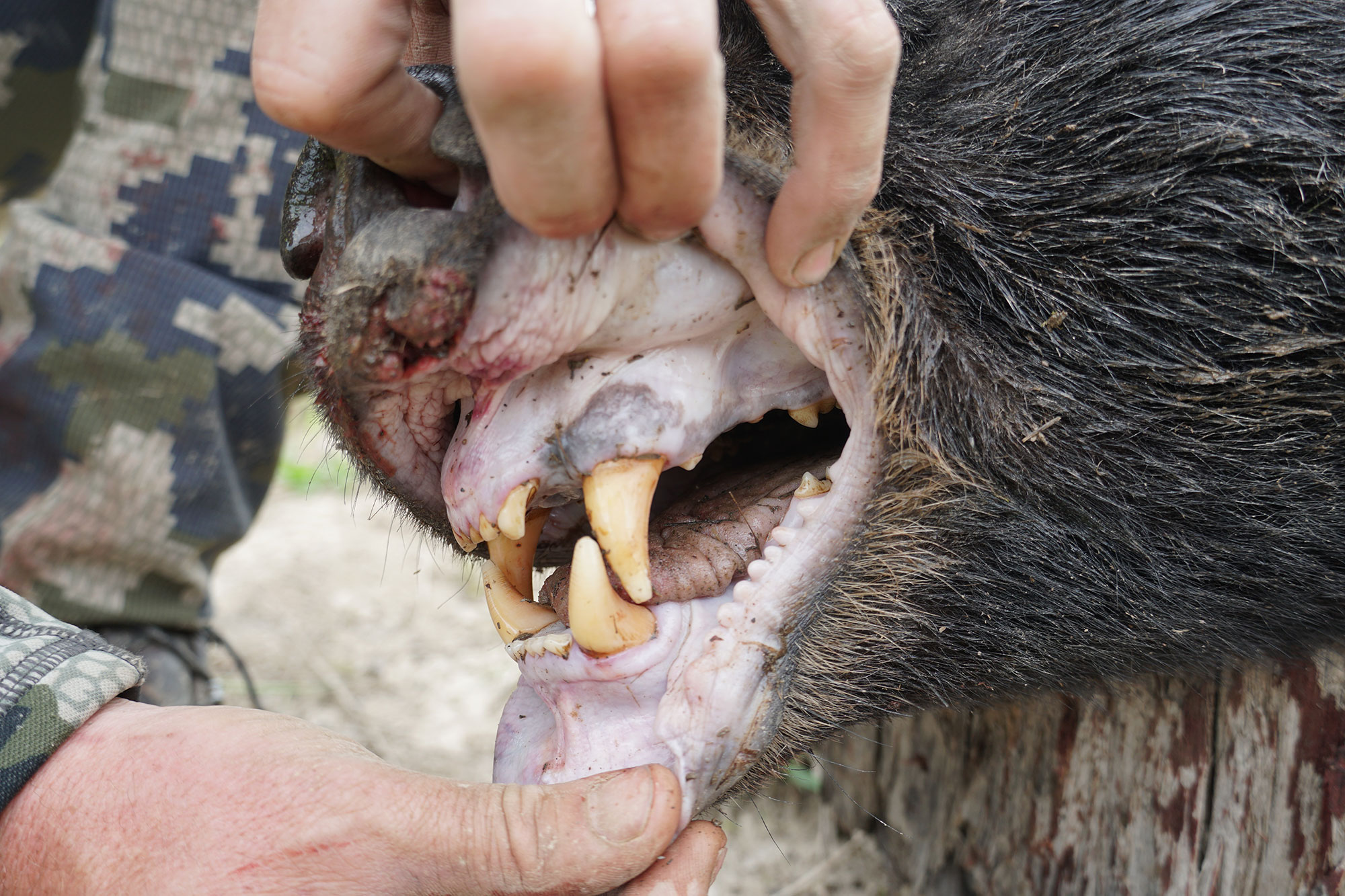
Some hunters are lucky. They seem to punch tags even on tough hunts. On hunts where opportunities are plenty, they seem to kill the big one in camp—and they often do it on the first day of the trip. Bettcher is one of these lucky hunters, much to the chagrin of his childhood best friend and our outfitter Shawn Murray.
I think the secret to being a lucky hunter is a fierce sense of optimism. When you truly believe you’ll kill one, you stay sharp the whole time and you end up capitalizing on the opportunities you get. And if you just keep trying, you end up getting opportunities other hunters wouldn’t. When things go wrong and the critters don’t cooperate, you don’t worry about it, because the hunting gods will surely smile upon you again soon. I like to consider myself one of these lucky hunters, at least most of the time.
Just before noon on the first day, we pulled over the crest of a hill and Bettcher spotted a bear that made us all whisper “Holy …”
We piled out of the truck and crept closer, just like in the practice stalks before. We got within about 120 yards before I dropped to a knee on the side of the road and set my rifle on the shooting sticks. The massive boar was on his own and headed in our direction, meandering from one side of the road to the other.
When he turned perfectly broadside, I squeezed off a shot and the boar crumpled in the road, not taking a step.
Read Next: Where to Shoot a Bear
What you don’t see in the video above is that my shot hit him high through the shoulder, dropping him only temporarily. A follow-up shot through the lungs put him down for good, not five feet off the road.
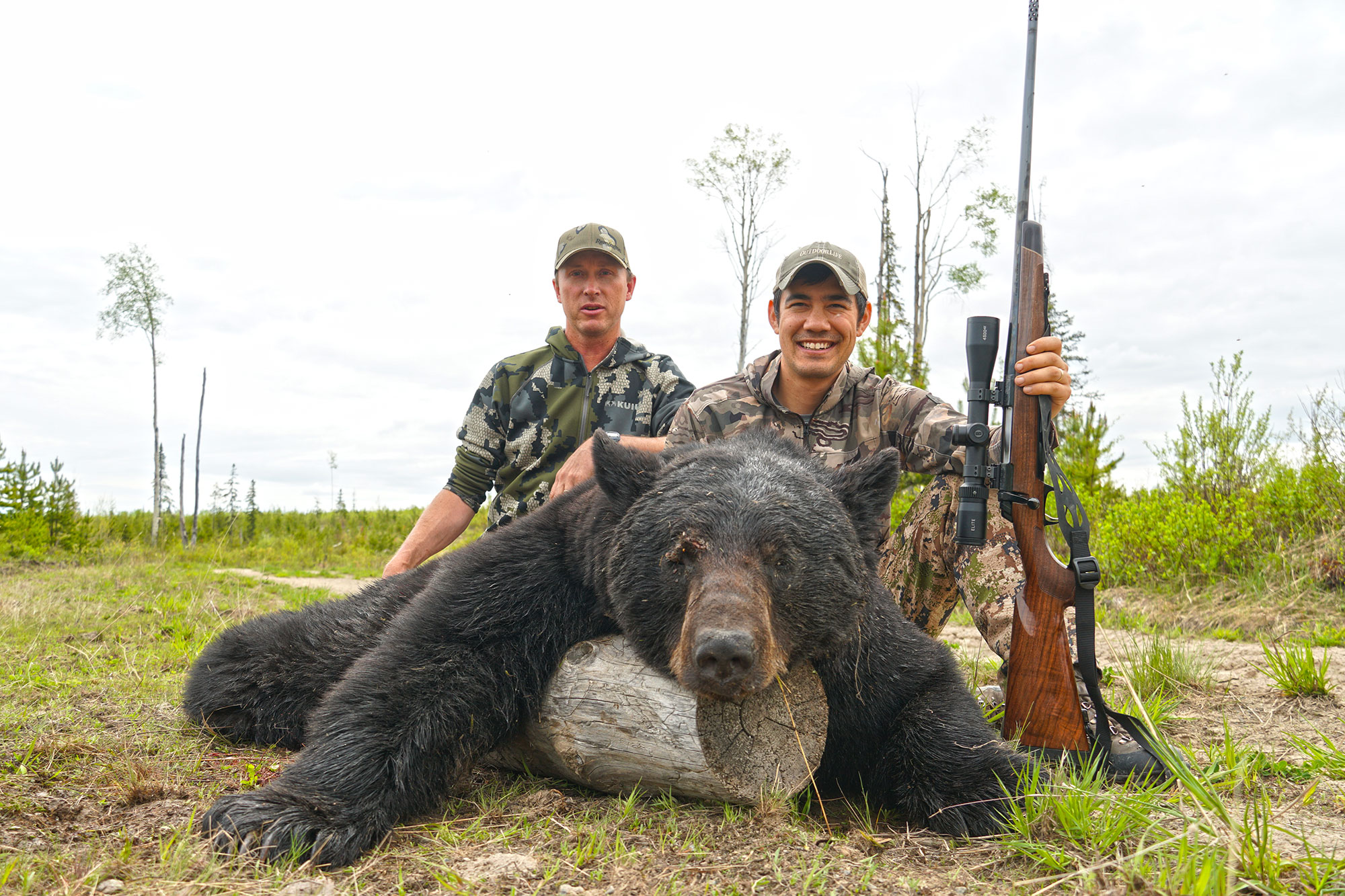
When we got up close, I was shocked by the size of him. His paws were more than five inches wide and his head reminded me of a giant Halloween pumpkin. It didn’t take too much imagination to visualize the power that a bear of this size could generate, with his tearing claws and smashing jaws.
I can’t give an accurate guess on the weight of the bear, but I can say it took all three of us everything we had to hoist him into the truck (even after he was gutted).
The next day, Rice was in the shotgun seat when we bumped into an even bigger bear. An almost comically fat boar was bird dogging a sow, along the side of the road. He stuck around just long enough for Rice to jump out of the truck and make a quick shot at close range. That bear crashed down only a few yards into the bush.
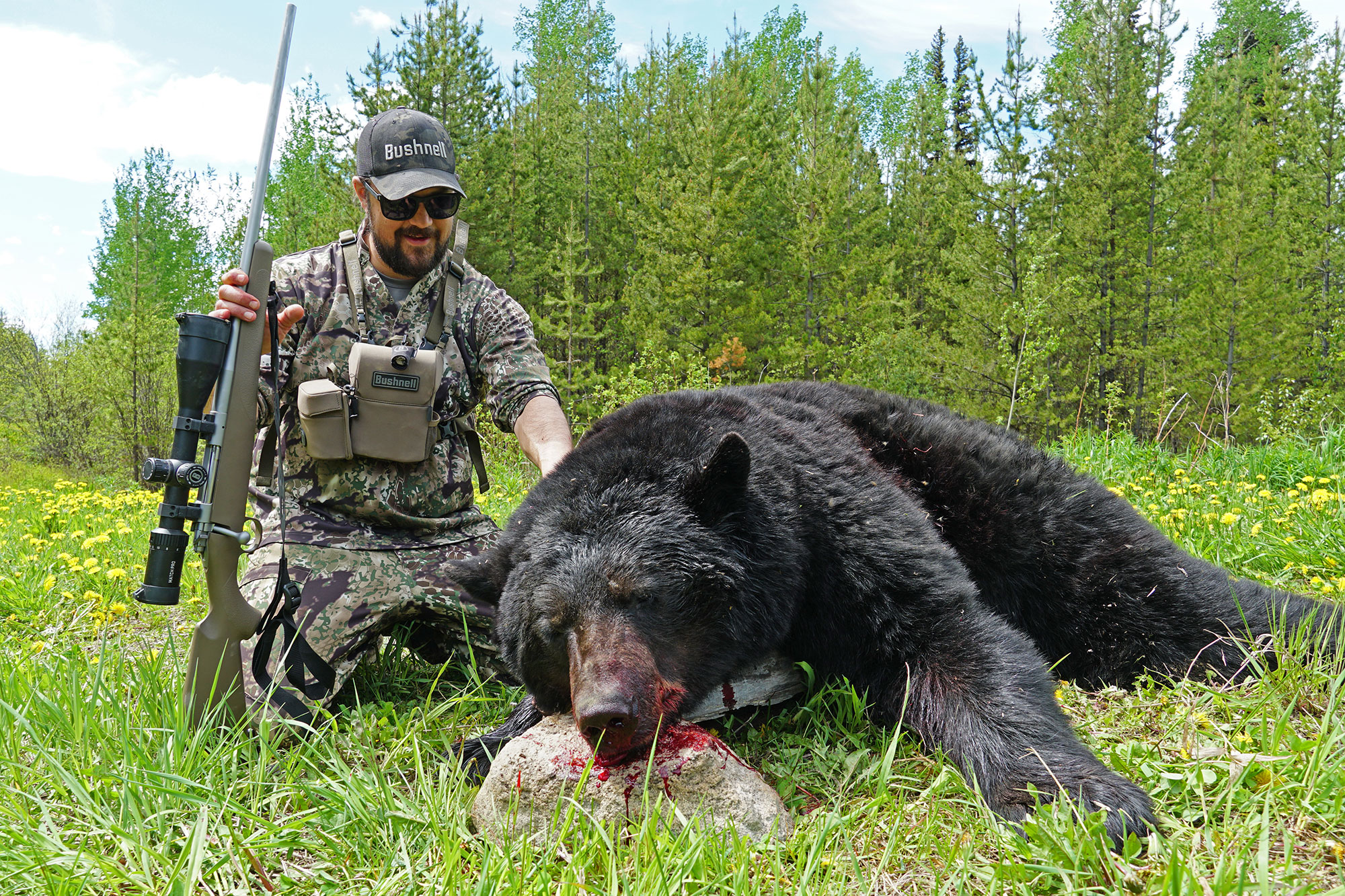
After skinning and butchering the bears, Bettcher helped us rough score the skulls. This is done with two simple measurements: the skull length and width. My bear ended up scoring 21 12/16 inches and Matt’s was just barely smaller (though it had a bigger body). The B&C all-time qualifying score for black bears is 21 inches.
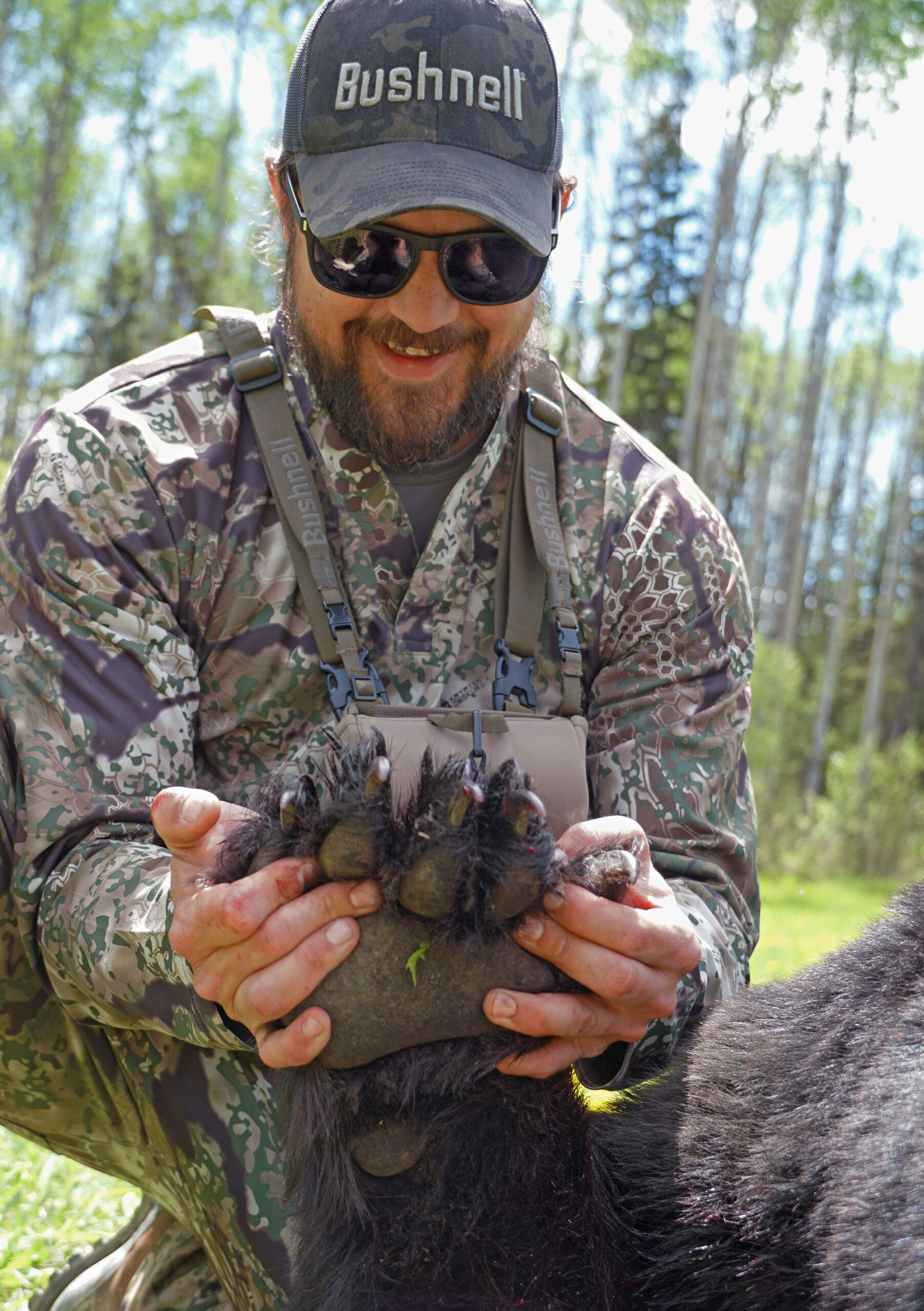
I didn’t know any of this before the hunt and had no intention of killing a bear that might qualify for the book. I say might because skulls shrink and our measuring was imperfect (we were using a tape measure and some old deck boards). But still, if the Boone & Crockett scoring system is meant to mark the health and vibrance of any given game population, then consider the scores from this hunt as just one small piece of evidence in the case that the giant black bears of the Northwest are doing just fine.
Loaded for Bear
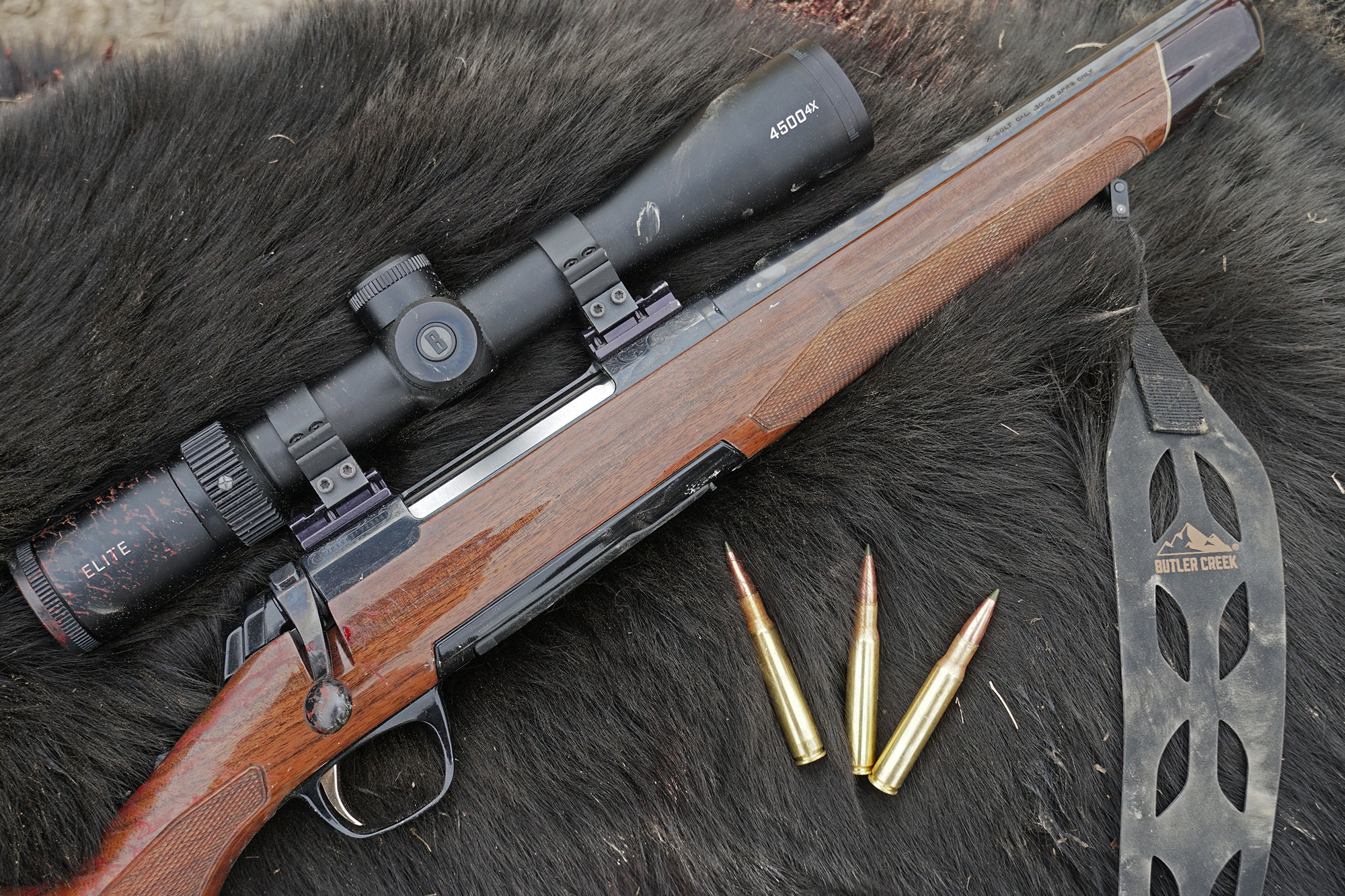
On this hunt both Rice and I were shooting the new Remington Premier Long Range loads, which utilize Speer’s Impact bullet. The Impact is a bonded bullet with a polymer tip, boattail, and Premier Long Range is now available in a variety of popular calibers from 6.5 Creedmoor up to .300 PRC. Speer is one of Remington’s sister companies under Vista ammunition, and it’s interesting to see how the companies are beginning to share components and technology across a variety of different product lines.
Read Next: Best Bear Cartridges
Obviously, neither of our bears were taken at anything close to long range. And the loads were so new (only .30-06 and .300 Win. Mag. were available at the time) that I didn’t procure enough ammo to do any real accuracy testing with them. But here’s what I can say about their performance: On all shots we got full passthroughs, with no indication that the bullets badly fragmented. That’s key for a true long-range bullet, which needs to expand at lower velocities but not blow to pieces at high velocities for close-range shots. Will the Premier Impact, become the next acclaimed long-range load? It’s far too early to tell, because it’s a competitive market with a lot of accurate loads out there. All I can say definitively at the moment is that it works as advertised on giant black bears at close range.

